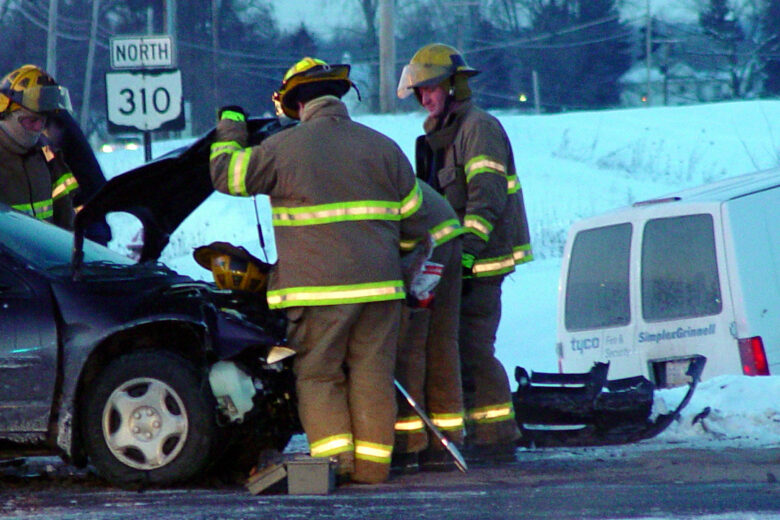Ontario motor vehicle accident legislation is a confusing area of personal injury law for many victims of a car accident. It is important for people to understand their available options for compensation through accident benefits and tort, and how these particular options interplay with each other. Failure to appreciate this balance (or failure to seek legal representation) can adversely affect the final amount of compensation, or at worst, eliminate entitlement to compensation completely. The best way to understand this ‘harmony’ between accident benefits and tort, is to start from the beginning, and keep in mind the fundamental rules that:
- Accident benefits is the first claim for early compensation after a motor vehicle accident; and
- Tort is meant to put the injured victim in the position they were in before the accident, and avoids ‘double recovery’ of damages.
Injured in an MVA? You must start an Accident Benefits Claim
If a person in Ontario suffers an impairment directly caused by the use or operation of an automobile, then that person may be covered by accident benefits and can apply by submitting a completed OCF-1 to their insurance company (or if they are a passenger or pedestrian then another insurance policy they may be covered by if they do no have their own insurance, or the insurance of the other driver, or the Motor Vehicle Accident Claims Fund).
By applying to accident benefits, a number of different entitlements may be available including but not limited to:
- medical/rehabilitation benefits (which can be between $3,500 to $1,000,000 and up to 5 years or the claimant’s lifetime; both amount and duration depends on the injuries sustained);
- attendant care at maximum $3,000 to $6,000 per month; both amount and duration depend on the injuries sustained;
- income replacement at 70% of gross weekly income up to $400 per week up to two years or more depending on the injuries sustained
- non-earner benefit (if they are not working or if they are a student) at $185 per week up to 2 years;
- lost educational expenses; or
- damaged clothing or medical assistive devices.
An accident benefits claim must be commenced before an accident victim can proceed with a tort and sue the negligent driver.
Suing the Negligent Driver in Tort
In most cases, a tort claim must be made within 2 years from the date of the accident.
Pursuing a tort claim may provide a claimant access to compensation that would have otherwise been unavailable in accident benefits such as general damages (pain and suffering), or other out of pocket costs like housekeeping or caregiver costs that are unavailable in accident benefits unless an optional policy was purchased or the claimant was rendered catastrophic. Certain family members may also be compensated in a tort claim through the Family Law Act, depending on the circumstances of the accident and the injuries sustained.
To be compensated for pain and suffering in Ontario, there are a number of legal tests that have to be met. First of all, the accident must have caused a serious and permanent impairment of an important physical, mental or psychological function. In general, this means that the injuries have to be serious enough that they substantially interfere with one’s ability to work, seek career training, or engage in their activities of daily life, on an ongoing basis without the expectation of substantial improvement in the future.
Another legal test to meet is the “deductible” test to determine if there is a claim for pain and suffering. In short, what this means is that if a jury awards general damages of less than $131,854.041 (or $65,926.46 for FLA Claimants), then $39,556.53 (or $19,778.27 for FLA Claimants) is deducted from the total award for pain and suffering.
For example, if a jury awards $49,556.53, then the total award received would only be $10,000 in pain and suffering.
To maximize success in a tort claim, a number of factors need to be considered, and the chances of recovery need to be carefully weighed to determine if pursuing a claim in tort is feasible for a motor accident victim.
The Accident Benefits Claim Can Impact Tort
Since accident benefits are available to motor vehicle accident claimants sooner than recovery from a tort claim, the Defendant of a tort is entitled to deduct any accident benefits received from their total exposure before trial.
However, the accident benefits claim can also have a positive impact on the tort claim: treatment and medical investigations often get funded through the accident benefits system that end up being instrumental in addressing damages and causation issues in the tort claim.
Another interplay between accident benefits and tort, is that the tort claim can act as a “catch” for the shortfall of treatment or losses that cannot be recovered in accident benefits. For example, if attendant care is required at the rate of $5,000 per month but the claimant is classified as non-catastrophic and thus limited to only $3,000 per month, then a tort action makes it possible to recover the remaining $2,000 per month as damages. If a claimant is non-catastrophic, then housekeeping and caregiver costs are also optional benefits in an accident benefits claim (i.e. you are not entitled unless you pay the premium). Yet these losses may still be recoverable in the tort claim.
The strength of an accident benefits claim can also act as a general “predictor” of the future and the viability of the tort claim. For example, if a claimant remains in the minor injury guideline (i.e. limited to $3,500 in medical benefits), then a lot of scrutiny may be held if they would be able to meet the required legal tests in tort for pain and suffering, as well as prove their income loss or other heads of damages.
Beginning January 1, 2020, the new changes to the Simplified Procedure Rules in Superior Court, have also increased the simplified procedure monetary jurisdiction to $200,000, streamlined certain processes, capped costs and disbursements and eliminated juries. What this means is that the accident benefits claim can also assist lawyers in determining if this process may be more viable for their clients in order to expedite recovery of damages in tort.
Finally, some insurance companies also tend to take a hard stance with respect to settlement and can bully accident victims into being forced to wait for trial in their tort claim. Accident benefits can assist claimants with much needed access to medical treatment and other benefits, in order to “endure” the tort process and the long procedures involved in bringing an action to trial.
The Future for Accident Victims
Dealing with the aftermath of a motor vehicle accident is a difficult and challenging process. But with an experienced lawyer, a significant amount of issues and stress can be alleviated by having a legal professional coordinate with clinics for treatment, advise on all relevant legal rights, and most importantly, advocate for a fair settlement with the opposing parties.














